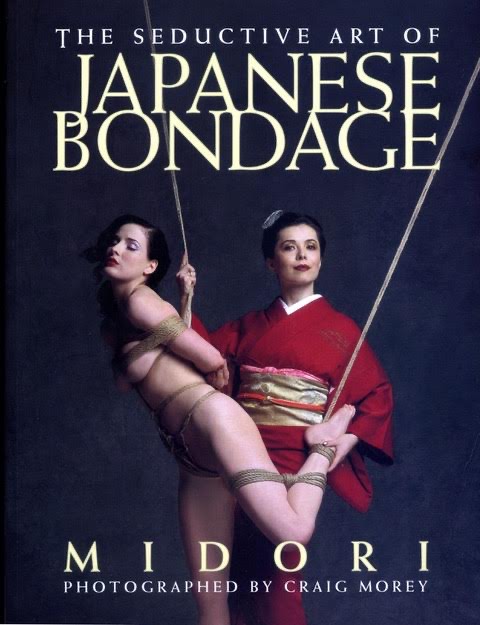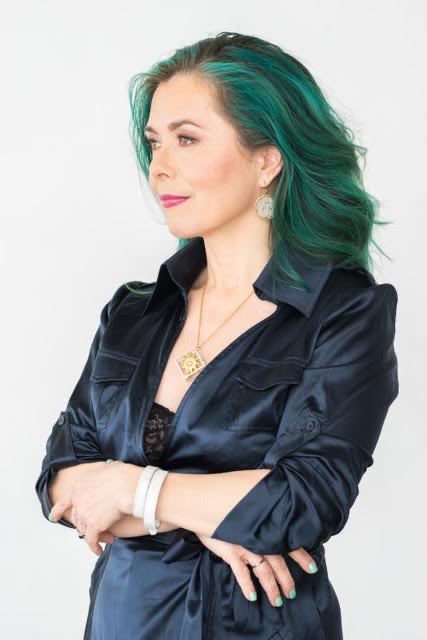On a sunny Saturday morning before the pandemic, my husband Raj and I biked up Howard Street to spend the weekend in a brick warehouse in South of Market, San Francisco’s historic kink district, learning how to tie each other up.
In true San Francisco tradition, all of us students sat on the floor in a wide circle, ready to learn from our teacher and her cadre of assistants.
Raj and I had heard about Midori’s Rope Dojo from all our sex-positive friends. The two-day intensive was the way to learn the basics of rope: it was hands-on, fast and fun. Plus, the only prerequisite was knowing how to tie your shoes.
What I didn’t realize was that Rope Dojo would be a breath of kink fresh air—playful, lighthearted and uninhibited. The sun and the breeze flew into the open windows and left both me and Raj feeling optimistic and buoyant as we giggled and got all tangled up.
I’ve been attracted to kink for similar reasons I’ve been into musical theatre: as a way to laugh and sing and play and soar, to temporarily take on different roles, to explore underdeveloped sides of myself.
Midori structured Rope Dojo to get us comfortable with ourselves and with each other. She cut through any rigid ideas about who is supposed to do what and let us all relax into the tactile sensation of rope in connection with our partners.
So every time someone asks me how to get started with dominance and submission, I want to bottle up the magic of Midori and say, “Start here. Start lighthearted. Start small.”

Midori is the author of The Seductive Art of Japanese Bondage, Wild Side Sex and more. She’s a longtime educator, a speaker at the American Association of Sexuality Educators, Counselors and Therapists (AASECT), a sex education trainer for therapists and a consultant to sexuality apps and websites.
Xtra reached out to Midori to provide an introduction to laughter in BDSM, topping and bottoming as verbs rather than identities and the wide world of playful, compassionate kink.
What is BDSM?
My definition of BDSM is childhood joyous play with adult sexual privilege and cool toys. A kinkster is anyone with a playful sense of imagination. This levity helps people step away from stigma and stereotypes.
We can also unpack that statement in deeper and broader ways. What exactly is adult sexual privilege? It’s contextual to culture, background, gender, gender expression, where we are, age. And then I see students realize, “Oh, I have the right to say yes with full intention and the right to say no to anything. And do I use that? Is that universal?” No, it’s not.
Similarly, what is childhood joyous play? It’s all the little rehearsals of coping with the world and dealing with love and loss and attachment. Play helps a person figure out their voice, power, role, agency and place in the world.
Sex and sports seem like the final arena in which postmodern citizens are allowed our inner animal and our inner child. We can bare our teeth. We compete, we consume, we yell, we scream, we sweat, we cry. We pound on the ground. We do the end zone happy dance. We emote hugely: we grunt, we groan, we make animal sounds. Just like our cousins, the chimpanzees, we form hunting groups and come into conflict with other chimp troops—what is that if not a pickup basketball or soccer game?
And at the same time we’re also laughing and forming friendships and making up silly rules. A good game of basketball is a bunch of silly rules. So is any sport! So we agree on a bunch of silly rules in order to have fun. And how is that not kink?
And that’s applicable in all kinds of BDSM contexts—and life.
Right. Shadows and monsters are an erotic power source. I’m also an artist, and I’ve taught this class as an art workshop for The Battery in San Francisco, which is a high society urban country club. Students come in and sit at long tables. At each seat is a papier mache mask, a bunch of art materials and a worksheet in which I talk people through how we present to the outer world. For people who’ve had the process of coming out into their truth and who they are, this is a familiar process. For people who are so privileged that they haven’t had to, this is challenging.
The front of the mask is about how we present, how we’re perceived, how we perform. I have people draw, write and decorate with glue and glitter. On the back side of the mask, it’s the parts that we don’t show, or that we’re afraid to show. I talk about how the truth of who we are is that space in between the front and back, then I invite any volunteers to share their shadow side.
One of the things I really appreciated about Rope Dojo was the emphasis on creativity and on kink as a means of connection rather than an end in itself. For example, “Eyes on person, not on rope.”
The principle behind focusing on the person, not the rope, is about understanding the objective versus understanding the tools. Here I am in San Francisco, next to Silicon Valley, where we have a tendency to look at the neat tools and see what we can do with them—as opposed to looking at what humans need and come up with a tool based on that. I’m not going to fault anyone for having an emotional pull towards an object. But we need to understand that the response to the object is the emotional state that we want to go to.
“An attraction to kink gear is just the tip of an iceberg for the emotional state.”
I’m going to make an analogy: The beauty industry understands that a lipstick is not a lipstick—it’s hopes and dreams and aspirations; it’s the next kiss, it’s how someone will look at me, how I will feel. It’s a romance of what can be. An attraction to kink gear is just the tip of an iceberg for the emotional state. And that’s why, in negotiating kink scenes, I talk about mood.
For example, if a student is into movies, we talk in terms of genres. Is the BDSM scene we’re going for more of a romantic comedy or horror? Because a clown showing up in a romantic comedy is very different from a clown showing up in a horror flick.
Let’s talk about what makes for a good kink experience.
The objective is a mutually good time. And sadism and masochism are about intense sensation, not pain. Everyone ought to get the aftercare that they want. That care can change the memory of your experience.
I love the sense of playfulness in your classes—the idea that it’s okay to laugh, to be silly, to have fun with kink.
That’s an important one. This is fun and games. It’s not about who you have to be all the damn time. Kink roles are temporary.
Right! And that gets into verbs versus nouns.
Yes. Think verb not noun. For example, if someone says, “I am a dominant”—I’ll think, “Is that all you have? All that you are? Boring.” But if someone says, “I want to dominate you”—oh my God, that’s hot! Similarly, “I am a sub” is boring, but “I need to submit to you” is hot.
Using verbs also gives temporality. In other words, you get an out—because why would you want to be one thing all the time? You get to have a pint of ice cream and sit on the couch and watch Netflix, too. I’m not a psycholinguist, but I think in some fundamental way, when we shift from I am a top to I enjoy topping, we shift from identity to action, from determinism to agency.

Credit: Courtesy of Midori
Have you gotten pushback around that in your classes? One of the things I appreciated about Rope Dojo was the framing, “Even if 99 percent of the time you feel like topping, don’t you want to know about that 1 percent where it might be different?”
I don’t get overt pushback. I can see the gears turning. And the 99 versus one example just gets people thinking. The hope is to expand people’s ideas of what’s possible, to get more creative.
You also use the terms “casting” and “receiving” rope, rather than “topping” or “bottoming.”
It takes the pressure off of topping and bottoming. I strip out and untangle who’s in charge and who’s following directions. They’re not necessarily the same thing.
I also love that everyone has to practice casting and receiving.
At a basic level, it’s about creating appreciation for the other’s efforts and presence when you’re actually playing and can do whatever you want. And if there’s any sort of stigma going either way, trying out both roles lowers the tension considerably. I’m just putting rope on ya; it’s just an exercise. The rope is not who I am. Our relationship and agreement puts how the tool is used into context. A piece of rope does not bestow authority on anyone. Otherwise sailors would run the world.
How do you define topping and bottoming versus dominance and submission?
Topping and bottoming are relatively broad, umbrella terms. Topping can include engaging in dominance—think of this as the person directing the scene. Topping can include creating intense sensations, often referred to as sadism. What’s intense for one person may not be for another. It’s all about degrees, much like different people have different definitions of spicy food. A person can engage with dominance with or without creating intense sensation, and they can create intense sensation with or without engaging in dominance.
“A piece of rope does not bestow authority on anyone. Otherwise sailors would run the world.”
Bottoming can include engaging in submission—think of this as the person following the scene. Bottoming can include enjoying intense sensations, often referred to as masochism. A person can engage with submission with or without receiving intense sensation, and they can enjoy intense sensation with or without engaging in submission.
Sometimes gay men ask: “How can you be dominant if you like to get fucked?” Well, you can tell your person submitting to you exactly how to fuck you to your standard, without ever losing your authority in the moment. You’re still directing the scene.
What can people who usually top get out of bottoming?
They can learn what bottoming feels like viscerally. How does this actually affect the body? How might it affect my feelings? Or, “Oh, wow, I am not comfortable with this—this is what the other person feels.” Also, if they like to play with Houdini-type folks, they can start thinking about how they might strategize their escape.
And what can people who usually bottom get out of topping?
They can start to understand the emotional vulnerability and the self-imposed pressure that people topping may have about doing something right. They can also learn how long it actually takes to do a thing, like tie wrists together. And they can see what it takes to be simultaneously in the present and a split-second in the future to plan the next move.
It’s like learning piano once you incorporate both hands at the same time.
Or like trying to learn how to drive stick shift! It’s kind of like driver’s ed. Since 2004, I’ve been teaching a three day intensive for women to learn about BDSM, their authentic power and how to create joy with their partners while keeping themselves centered in the experience. It’s called ForteFemme. When I’m teaching ForteFemme, I bring in trainer bottoms: experienced, mostly switch, incredibly patient, compassionate friends of mine who come in for negotiation with a real person.
Sometimes people ask, “Are these your slaves?” or “Are these volunteer submissives for me to do anything to?” No. These are driver’s ed teachers. Some of y’all are already race car drivers, and some of y’all have never been in a car. My friends will sit in the passenger seat and adjust to your driving ability. If they make a polite suggestion, it is not literally a suggestion—do it.
Let’s talk about bottoming skills.
It’s understanding your boundaries and limits for that day. It’s expressing your own aftercare needs and asking for the aftercare needs of the person topping (who may not even realize their own aftercare is an option). It’s assessing your own and the other person’s communication skills.
There’s a lot of focus on trying to assess the other person’s technical skills. But honestly, I’d rather play with a person with a high degree of emotional intelligence and communication skills who had zero technical skills than someone with exceptional technical skills and zero communication skills.
Communication skills are sexy. And it all starts up front.
During negotiation, my favourite question is, “What do you look like and sound like when it’s good for you? What about when it’s not good for you?” Explain that to your partners voluntarily, especially if you make really weird faces when it’s good for you!
When I’m very focused and concentrating on rope bondage, I look like I’m constipated. It’s fair for me to share that to the person bottoming to me. Likewise, I have a friend who will make all sorts of noise and bang on the floor or the wall with his hands, but if he makes a fist, I need to back off. It’s not even a safeword thing—it just happens before he can understand his emotional state.
You might need to ask your lovers to identify your signs of pleasures and displeasures. Those signs will show way before you are able to take an inventory of your physical and emotional state and convert that into language.
You might be surprised: “No shit, I really do that?!” It’s a fun, slightly embarrassing conversation to have. And it really helps for those of us who aren’t verbal during sex. Since I lecture for a living, talking engages my adulting brain and takes me out of the scene. So instead of words, I just share my nonverbal cues.
Setting up a good scene makes in-scene communication easier, verbally and nonverbally. It’s not just about picking a safeword and saying, “Let’s go!”
Safewords are good to have, but they don’t keep you safe. They’re like the emergency handbrake. Before you get there, you want to take your foot off the gas, try the regular brake, adjust the experience.
Recently I’ve been teaching therapists about the microcycle of consent: transmit, comprehend, decide, act.
I’ll draw an analogy with dancing, which uses a very limited vocabulary.
- Transmit: I feel your hand on my hip.
- Comprehend: I understand that you want me to move to the left.
- Decide: Do I want to move that way?
- Act: Yes, I do—and I move.
In the course of one song, there are hundreds of microcycles of consent. And that’s exactly what a kink scene is: giving and receiving, over and over.
Can you share an exercise with readers who are interested in trying out BDSM? What’s their first step?
There’s an exercise called telling and asking/asking and telling. Take something you and yours already enjoy, erotically. Let’s assume oral sex is one of those things.
“Hey, would you go down on me?” is asking. If I want to play with dominance, I’ll switch it to, “You will go down on me.”
The advantage in this game is we already have practice and skills. We know where the bits and bobs are. We don’t have to learn a new technique, or wonder if our person is into this. But we’re changing the content.
Stepping into a dominant role during play isn’t a permanent shift in your relationship dynamic. It doesn’t mean that all your sex will be kinky forever and henceforth—that’s Fifty Shades bullshit. Instead, it’s a game to allow us more nuance in playing with power and sensation. It’s just a way to add to your existing repertoire.
And the partner can help. If I’m playing “tell you not ask you” and I slip into asking, catch me on it, but in a fun way, like Simon Says. If I ask, “Would you mind tweaking my nipple?” you can say, “Ask me that again,” or “How did you mean to say that?” and I’ll shift to, “Oh, oh! You will lick my nipple.”
“Our tastes can change as we evolve and grow as a human being.”
And what about for readers who are experienced kinksters?
If it’s working, mazel tov! If not, take heart: nuances, interests and appetites do change. Our tastes can change as we evolve and grow as a human being.
If we attach ourselves to a technical proficiency as encompassing our identity, we’re painting ourselves into a corner. So, if you’re experienced: try something you’re not good at! Be honest that you’ve never done it, you have no idea how it works, you’ll likely screw up—and try it anyway.
When we see people who’ve played together for a long time, who know each other’s bodies and buttons well, it’s easy to imagine that crafting standout scenes requires a familiar face. But you also teach how to create intimate, connected, hot scenes with strangers.
I’m going to talk about pickup basketball again. Can people who don’t know each other have a good pickup basketball game? Yes. Do two players who’ve been playing for years play really well with each other and get into a better flow? Yeah!
But what’s the context? To what extent are we hoping to connect, and what is our desired outcome? Maybe it’s, “I want a bit of intense sensation and I want to feel naughty and maybe a little bit scared.” There’s an excitement to playing with somebody you don’t know. Or another way to put it: not every meal needs to be an eight course banquet. Sometimes you get to have a bag of chips.
Anything else you’d like to share with readers?
There are therapists, counsellors and medical professionals out there who are kink savvy and kink fluent. If you’re kinky, make sure that you find people who are not going to judge you, and who understand that BDSM is part of your sporting activities.
If you play tennis and suffer a wrist injury, most medical professionals wouldn’t go, “OH, YOU PLAY TENNIS, I won’t treat you.” They’ll say, “You play tennis, but you’ve got a weak right wrist, so you’ve got to wear this brace and do this physical therapy.” You want your medical providers to have a similar attitude to kink. For example, you may need a tetanus shot because you play with needles, or you may consider PrEP to prevent HIV—something that people of all genders and orientation can benefit from.
Yeah. I often recommend the book Health Care without Shame and the Kink Aware Professionals directory. Are there any other resources you’d like to share?
Those are great. I’d also add the Sexual Health Alliance for people looking to build careers in sex education. In terms of broader kink education, I recommend reading a lot of smut as research. See what makes you go tingly to help narrow down the kind of feels you want. Sometimes it’s specifically kink, but other times it’s not. For example, I love Seven Japanese Tales by Junichiro Tanizaki—a Japanese author that’s at the cultural level of Hemingway, a literary genius. That’s my smut, but find your thing. I give people the smut homework before how-to books, because how-to books are boring.
Also listen to true stories. At Bawdy Storytelling, you get to hear the stories of things going really wrong. I got to tell the story of the most annoying scene ever. It’s a nonthreatening and funny way to talk about kink with one’s partner.
For rope, check out Shibari Study and Karada House. And for articles and classes, I recommend Spectrum Boutique and The Pleasure Chest. Velvet Lips Sex Education, organized by Marla Stewart, had a fantastic series called Race and Kink—a small, biweekly group discussion that I got a lot out of.
In terms of philosophical stuff, I love Patrick Califia’s writing. Greenery Press’s catalog and their toybag guides are really good. And I’ve heard really good things about Jessica Fern’s book Polysecure: Attachment, Trauma and Consensual Nonmonogamy.
And of course there’s my Patreon office hours and private coaching.
This conversation has been edited for length and clarity.


 Why you can trust Xtra
Why you can trust Xtra


